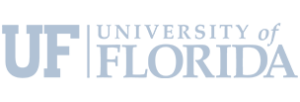In December 2023, we had the opportunity to be one of four sites in the United States for the Becker Education and Engagement Day (BEED). Our local event was a gathering of individuals with Becker muscular dystrophy (BMD), their families, researchers, and experts to gain insight into living with BMD, the needs of this population, and to share current treatments and care for this condition. Several panels and presentations were held throughout the day to educate attendees which we’ll highlight in this summary. We’re so grateful for everyone who made it to our local event and helped us spread awareness for Becker muscular dystrophy and research in this area!
“Imaging Muscles in Becker Muscle Dystrophy” Presentation
Dr. Vandenborne led a presentation on “Imaging Muscles in Becker Muscle Dystrophy” at the Becker Education and Engagement Day event. This presentation went over how the ImagingNMD study began and the progress that has been made in imaging BMD through MRI. The goal of the study is to:
- Learn more about how disease progression affects different muscles in patients with different mutations.
- Develop measures to objectively examine the effectiveness of new medication in clinical trials by imaging the muscles.
- Understand how dystrophin levels relate to disease progression.
While MRI cannot measure dystrophin levels, it is sensitive other key pathophysiological features of disease progression in muscular dystrophies such as muscle damage, inflammation, muscle wasting, and fiber replacement by fat. In this presentation, Dr. Vandenborne showed several MRI scans of young boys with DMD and how the team was able to measure fat infiltration over time.
From the research participants, the study found that the progressive fat infiltration in an individual muscle tends to follow an S-shape trajectory—progressing slowly at first, followed by a phase of rapid increase, and then leveling out since there’s less muscle to replace. Alongside measuring fat and muscle levels at different ages, researchers evaluated how fat accumulation in the muscle affects functional ability. The study was able to show that people who have less fat in their muscles score higher on functional assessments, which measure their ability to move and function without assistance.
This study is still ongoing, but the results so far have been promising in providing vital knowledge on disease progression and the impact of fat infiltration on the body’s function. If you want to know more about this presentation, you can watch it in full here!
“Muscle Health, Physical Therapy, and Exercise” Presentation
Dr. Lott and Dr. Senesac got to present together at our BEED event on “Muscle Health, Physical Therapy, and Exercise.” Dr. Lott opened with the dilemma that while other forms of muscular dystrophy have guidelines on recommendations for exercise, BMD has none. This makes it difficult for individuals with BMD to know what kind of exercise would be beneficial without the potential of causing muscle damage.
The presentation explains that exercise is vital for muscle health and growth. As someone without dystrophinopathy exercises, micro-damage occurs in the muscles. When the body repairs the muscle’s mico-damage, that muscle becomes stronger and bigger. However, people with BMD and DMD lack or have impaired amounts of a protein called dystrophin, increasing their risk of muscle damage and wasting. Because of this, people with BMD and DMD must find a balance between avoiding atrophy and injury; however, research suggests that keeping active and exercising muscles leads to longer survival rates.
Dr. Lott suggests isometric exercise, resistance/strength exercise, aerobic exercise, and flexibility exercise may all be effective in mild to moderate intensities for people with BMD. Regardless of the exercise, Dr. Lott emphasizes the importance of not pushing the body to the point of exhaustion or pain as this can increase the risk of muscle injury. Dr. Senesac took over the presentation to introduce some specific exercises. If you’re interested in the studies Dr. Lott showed and the exercises Dr. Senesac recommended, you can watch the full presentation here!
Thank You to the Sponsors for the BEED Event!
We’re so thankful for all the sponsors of our local BEED event. We couldn’t have put on the event without our sponsors, and we are so grateful for being a part of a community dedicated to Becker awareness and research. Our sponsors of the event included:
- Edgewise Therapeutics
- ImagingNMD
- Muscular Dystrophy Association
- Parent Project Muscular Dystrophy
- ReveraGen
- UC Davis Health
- University of Pittsburgh
- Virginia Commonwealth University
For more information on our sponsors, learn about them here!
Looking to the Future for Advancements in BMD Treatments
Once again, thank you to everyone who made it out to our local Becker Education and Engagement Day event! Each step towards awareness and education is another step closer to a cure. If you or someone you know has BMD and wants to help advance research of the disease, reach out to ImagingNMD’s team to see if you’re eligible for our study!





